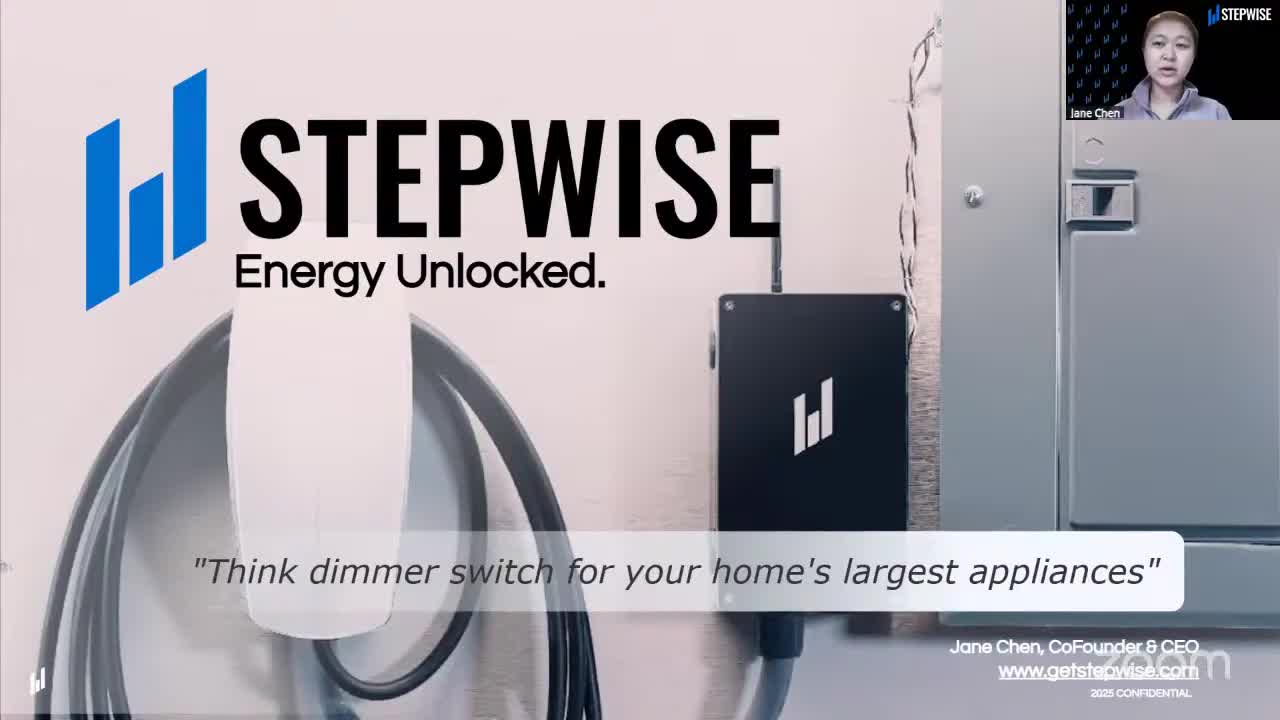Serum proposes innovative platform to enhance municipal energy planning in Connecticut
September 17, 2025 | Public Utilities Regulatory Authority, Departments and Agencies, Organizations, Executive, Connecticut
This article was created by AI summarizing key points discussed. AI makes mistakes, so for full details and context, please refer to the video of the full meeting. Please report any errors so we can fix them. Report an error »

In a recent technical meeting held by the Public Utilities Regulatory Authority (PURA) in Connecticut, discussions centered around innovative solutions to enhance access to electric vehicle (EV) charging, particularly for homeowners with older electrical systems. The meeting highlighted a new device developed by StepWise, which aims to simplify the integration of EV chargers into homes that may not have the capacity to support them without costly upgrades.
As the conversation unfolded, it became clear that a significant barrier to EV adoption is the financial burden of upgrading electrical panels, which can cost homeowners upwards of $5,000. This challenge affects approximately 48 million homes across the United States, representing about 20% of the population. StepWise's solution is likened to a smart dimmer switch that intelligently manages energy usage, allowing EV chargers to operate within the existing limits of a home’s electrical panel without the need for expensive upgrades.
The device functions by monitoring energy consumption and adjusting the power supplied to the EV charger in real-time, ensuring safety and efficiency. This innovative approach not only reduces installation costs but also eliminates the need for separate permits, thereby accelerating the adoption of EV technology.
During the meeting, StepWise representatives outlined plans for a pilot program in Connecticut, which aims to deploy up to 100 of these devices in collaboration with local utilities. The pilot will also explore partnerships with electricians to raise awareness and facilitate participation in managed charging programs. This initiative is particularly focused on reaching disadvantaged communities that may struggle with the costs associated with EV technology.
The pilot program is designed to gather data on the effectiveness of the device in promoting managed charging, which is crucial for reducing peak demand on the electrical grid. By encouraging responsible charging practices, the initiative aims to lower electricity costs for all consumers while supporting Connecticut's ambitious goal of having 500,000 EVs on the road by 2030.
As the meeting concluded, the potential for scaling the pilot to 250,000 devices was discussed, contingent on the success of the initial deployment. This ambitious plan reflects a growing recognition of the need for equitable access to electrification technologies, ensuring that all homeowners can participate in the transition to electric vehicles without facing prohibitive costs. The outcome of this pilot could pave the way for a more sustainable and inclusive future in Connecticut's energy landscape.
As the conversation unfolded, it became clear that a significant barrier to EV adoption is the financial burden of upgrading electrical panels, which can cost homeowners upwards of $5,000. This challenge affects approximately 48 million homes across the United States, representing about 20% of the population. StepWise's solution is likened to a smart dimmer switch that intelligently manages energy usage, allowing EV chargers to operate within the existing limits of a home’s electrical panel without the need for expensive upgrades.
The device functions by monitoring energy consumption and adjusting the power supplied to the EV charger in real-time, ensuring safety and efficiency. This innovative approach not only reduces installation costs but also eliminates the need for separate permits, thereby accelerating the adoption of EV technology.
During the meeting, StepWise representatives outlined plans for a pilot program in Connecticut, which aims to deploy up to 100 of these devices in collaboration with local utilities. The pilot will also explore partnerships with electricians to raise awareness and facilitate participation in managed charging programs. This initiative is particularly focused on reaching disadvantaged communities that may struggle with the costs associated with EV technology.
The pilot program is designed to gather data on the effectiveness of the device in promoting managed charging, which is crucial for reducing peak demand on the electrical grid. By encouraging responsible charging practices, the initiative aims to lower electricity costs for all consumers while supporting Connecticut's ambitious goal of having 500,000 EVs on the road by 2030.
As the meeting concluded, the potential for scaling the pilot to 250,000 devices was discussed, contingent on the success of the initial deployment. This ambitious plan reflects a growing recognition of the need for equitable access to electrification technologies, ensuring that all homeowners can participate in the transition to electric vehicles without facing prohibitive costs. The outcome of this pilot could pave the way for a more sustainable and inclusive future in Connecticut's energy landscape.
View full meeting
This article is based on a recent meeting—watch the full video and explore the complete transcript for deeper insights into the discussion.
View full meeting
